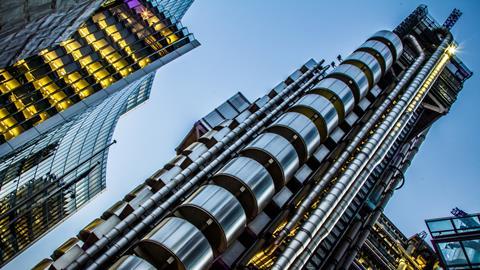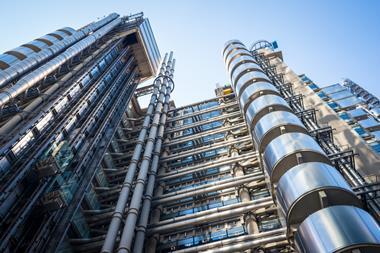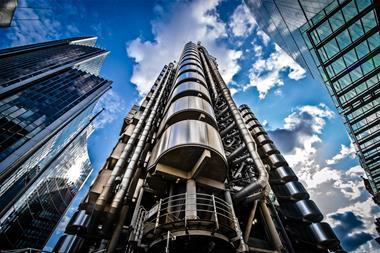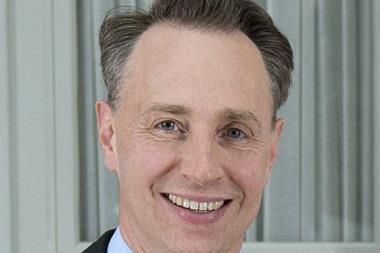Lloyd’s urges analysts and the wider industry to look beneath its headline full-year figures to see progress - it pledged there is more to come
Although Covid-19 payouts blew a £6bn hole in Lloyd’s of London’s reported 2020 performance, the market’s chief executive John Neal emphasised that below the surface, progress was continuing.
Speaking to journalists following the publication of Lloyd’s 2020 full-year financial results last week, Neal described the market as the “crossroads for insurance and reinsurance globally”, adding that every insurance and reinsurance entity in the world should want to be operating at Lloyd’s.
There is much to be proud of, he said, despite Covid-19 leading to a claims environment which he ranked alongside 2005, when the US was hit by hurricanes Katrina, Wilma and Rita, and 9/11.
However, 2020 saw the fourth year in row where premiums have increased, with Neal adding he had only seen the current market conditions twice in the past 35 years of working in the industry.
Covid-19 had hit the market, but not in the way it had affected other insurance entities, said Lloyd’s.
Half of Lloyd’s claims arose from event cancellation and contingency claims, with only 15% coming from first party property claims. Business interruption (BI) accounted for £528m of the £6.2bn projected total cost of Covid to the market.
Underwriting focus
Underwriting performance was, and remains, a key issue for Lloyd’s, added Neal.

“We have taken out 20% of the worst parts of our business by remediation and performance management, not by sale or disposal,” he explained. “We have done the hard yards of remediation [for] that business and it will continue.”
Indeed, he said the market should never stop looking at the poorest performing 10% of its business, seeking to make it better via more sustainable rating or removing it.
“It is a remarkable story,” he added. “Despite the impact of Covid, it is a better quality book of business and a better priced book of business.”
The stagnant investment markets had also placed increased pressure on underwriters to better price their risks.
Neal explained that in decades past, investment returns had delivered a significant amount of the profits for underwriters as they sought to achieve market share via price competition.
“That began to change and we saw a 50-50 split between underwriting and investment returns,” he added. “Now it is more a case of 70% underwriting profit to 30% investment returns.”
Sustainable growth
Turning to the year ahead, Neal said Lloyd’s priorities had not changed.
Performance is front and centre – Lloyd’s is already undertaking a review of the market’s business plans as it seeks to learn lessons from the impact of the pandemic on performance.
“We expect some movement in the plans given Covid,” Neal said. “However, what we want to see are the improving patterns that should come with the current rating environment.”
Core to the market was the need to obtain a deep understanding of how it prices the risks it is being asked to assume.
The market saw its operating expenses fall by 2% this year, but Neal said it must do better, pointing to its ongoing blueprint for digitalisation, which aims to turn the time taken between quote and bind into minutes rather than days or sometimes weeks.
Neal said the market was not afraid of growth, but that growth needed to be sustainable and profitable.
He added: “You have to earn the right to grow by increasing exposure and to do that, you need to show that you can do so without negative impact on your combined ratio.
“There is no problem with growth via rate increases. We are happy for our syndicates to deliver rate driven growth. We would discuss plans for exposure driven growth with our best performing syndicates. When you have earned the right to do so, you can grow both by rate and exposure.”
Bouncing back
He pointed to the fact that while rates across the classes are up 10%, claims inflation is at 3.5% - providing another reason to be optimistic for the future. He predicted that the market will bounce back to profit for 2021.
Stripping Covid-19 claims out of the market’s results for last year, Lloyd’s combined ratio would shrink from 110.3% to 97%.
Its work on its digital transformation should create new opportunities for brokers and coverholders to place risks that in the past have simply been unsustainable at a price which would match that being quoted outside of One Lime Street.
Progress has been made, but as much as the market would like to be living in a world where they had delivered a 97% combined ratio, the reality remains that it stands at 110% and the market saw a loss of £900m in 2020.
Neal and the management team are supremely confident that 2021 will be a very different story, but uncertainty over the impact of the pandemic remains.
Much of this positivity is based on the UK and the rest of the world throwing off the shackles of a pandemic enforced lockdown, with the UK set to return to a new normality by the end of June.
However, talk of third and fourth infection waves in continental Europe and the US - Lloyd’s major markets - still has the ability to pull the profits from under the market’s feet.













































No comments yet